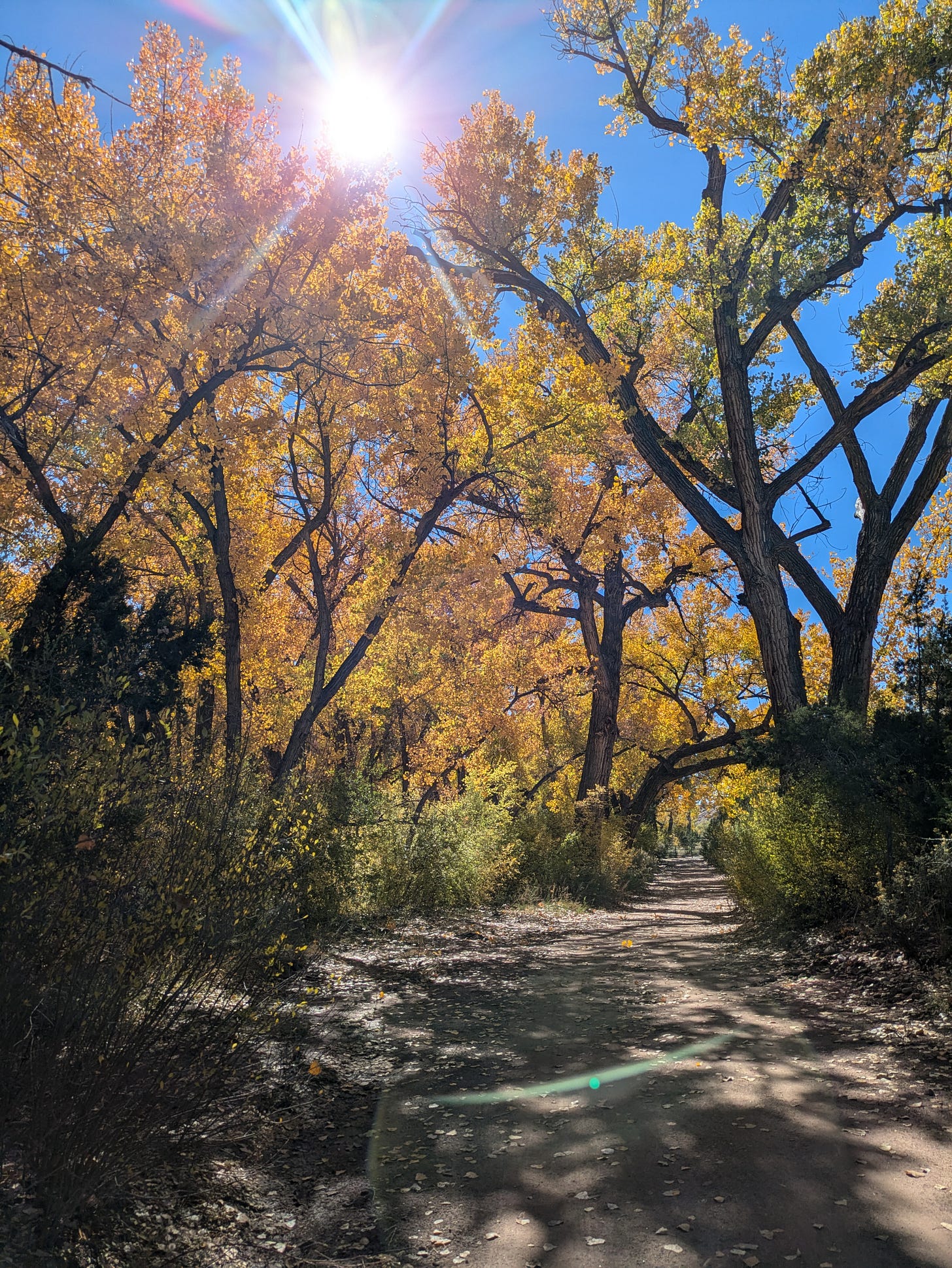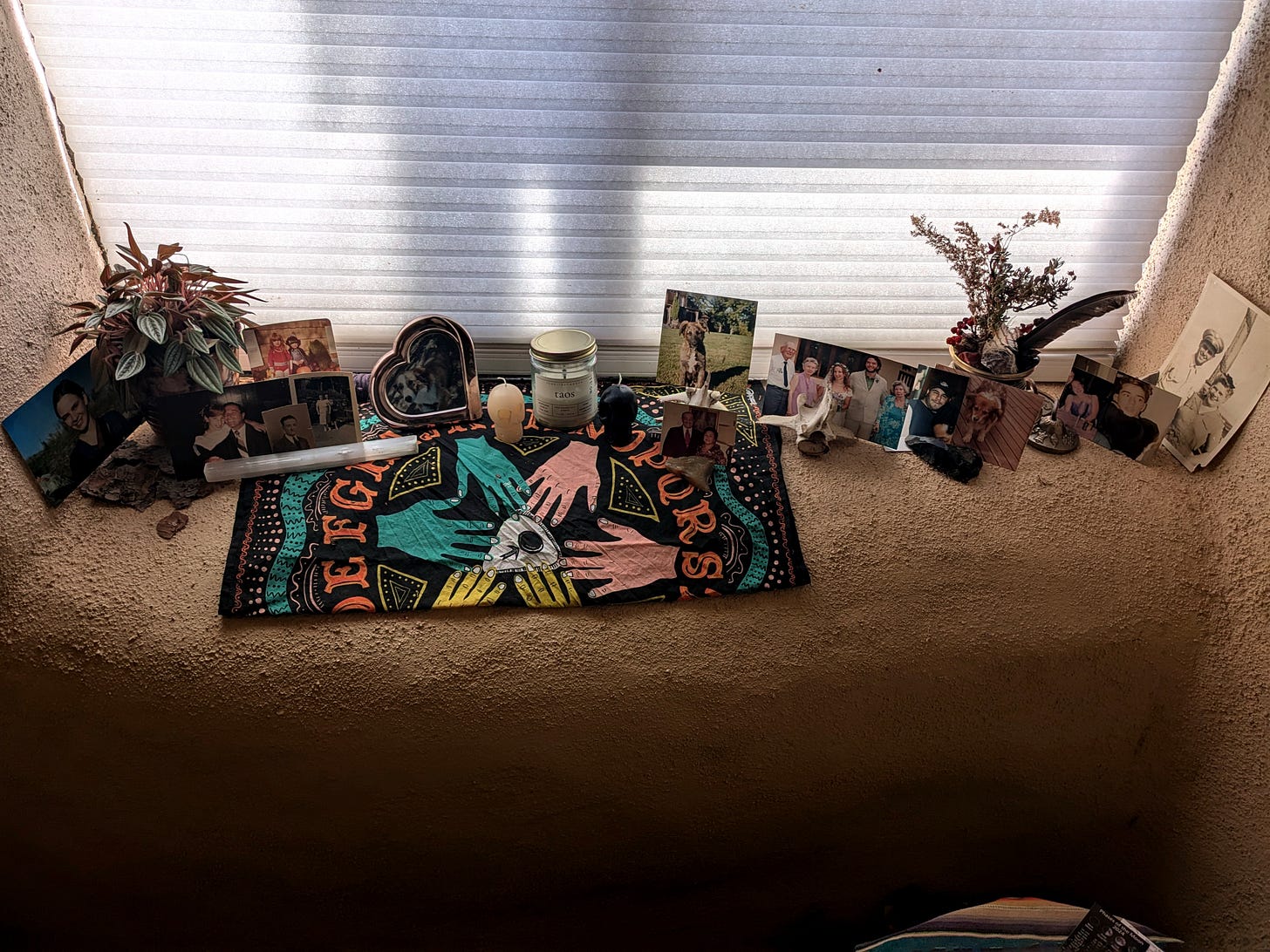When the World Dies Back
The sunflowers have dropped their heavy heads and gone to seed. The frost greets each morning with a frigid predawn kiss, wilting the last remaining vegetables to black. The berries are frozen on their withered stalks. Trees are dropping golden leaves in the autumn windstorms. Everything is dying back.
Organic matter disintegrates and decomposes and returns to the soil. This is true for all things eventually. Everything will return to the dirt, including us. We will feed the maggots and worms on our body until it decomposes into fertile soil. The fungi and bacteria will disintegrate our bones until they crumble to dust.
This composted soil will create the perfect conditions for fallen seeds to grow again in the new season.
The Necessity of Death in the Cycle of Life
If suddenly all organic beings stopped dying, the soil would no longer be nurtured with rotting nutrients and there would be nothing to feed the soil and nothing new would grow again. Life without nourishment or newness would be dull and stale. Because of the beautiful cyclical nature of earthly existence, death is necessary for birth.
Autumn is a season for remembering the importance of death in our lives. Because the natural world around us is dying back, we cannot deny the inevitability of our own death. I hope when I die (at the age of 101!) that it is in autumn.
In the Tibetan Book of the Dead, meditating on your own death is encouraged. In this way, we can accept the impermanence of all things and embrace that existence is ever-changing. This is also meant to encourage non-attachment to material existence and instead to focus on the true essence of our own being, the essence that will transcend death, “the pure and luminous consciousness.” Death is not considered the end, but a new beginning, a new realm of existence.
On Grief and Loss
But I don’t want my loved ones to die. I don’t want to die. I don’t want my forest to burn to the ground. I don’t want my house to collapse to dust. I don’t want to grieve ever again.
I have been well acquainted with grief in my life. It wrenches at the heart and once it gets a foothold in there, it never leaves. Grief is a wound that heals but leaves a dark scar. No one who lives can ever escape the grips of grief. The longer you live, the more you will be forced to befriend it.
The human resistance to death is natural, of course. Losing what we love hurts, it hurts bad. No amount of logic about the life cycle can create a salve for deep grief.
But for believers, those we grieve are still with us in spirit.
Spirit Ancestors Across Cultures
In Japanese tradition, it is believed that after death, a person’s spirit continues to exist and may even become a protective deity, especially if remembered properly by descendants. In Shinto traditions, the souls of the dead are thought to persist in the world as kami (divine spirits) who can be called upon or honored through rituals for blessings, guidance, or protection.
As in eastern philosophy, neo-pagans and witches also believe that our spirits transcend our bodies in death to a new realm of existence. Amanda Yates Garcia says in her book Initiated: Memoir of a Witch, which I read this month in book club and loved, “To be a witch is to remember that the world is alive, that our ancestors walk beside us, and that we are never alone.”
Native American Chickasaw writer Linda Hogan says in her book Dwellings: A Spiritual History of the Living World, “Suddenly all my ancestors are behind me. Be still, they say. Watch and listen. You are the result of the love of thousands.” The living have the ability to sense the presence of our ancestors by quietly listening, to feel their encouragement, and recognize that our existence is shaped by their love and sacrifices.
There is an African proverb I heard that says, “The ancestors are watching; they are not gone; they live in our tears and our laughter,” which reflects the belief that ancestors remain spiritually present and continue to influence and support the living through our emotional experiences.
Memory Keeps Spirits Alive
I love to watch the Pixar movie Coco at this time of year. It takes place in Mexico on Día de los Muertos (Day of the Dead). 12-year-old Miguel accidentally finds himself transported to the Land of the Dead, where he meets his ancestors and learns the importance of memory and tradition. In the movie, a trickster character named Héctor says, “If there’s no one left in the living world to remember you, you disappear from this world.” This line stuck with me and reminded me of the importance of preserving our ancestor’s legacies and giving their lives meaning. It makes sense to take time to give gratitude to our ancestors for the paths they paved for us.
We would not exist without our ancestors. They opened doors for us, invisible and visible, to walk through, to become who we are. Our ancestors are still with us, looking out for us, and watching our backs.
Many northern cultural holidays (holy days) exist in northern autumn to remember and commemorate ancestors and those that have passed on, such as the pagan Samhain, the Mexican Day of the Dead, the Jewish Yom Kippur and the Japanese Higan. Now is a time to thank our ancestors, remember them and rejoice in the love they created, as well as to forgive those ancestors that made mistakes.
6 Ways to Honor Your Ancestors
If your culture does not have a specific tradition of honoring the ancestors, you can connect with your ancestors in different ways depending on what interests you.
1. Learn more about your ancestry through a DNA test, history books, and asking your elders to tell stories about the people they knew in childhood and the stories, songs and traditions that were passed down to them from generation to generation.
2. Create an altar with pictures of people you knew and didn’t know, those you were related to and those you weren’t, that have passed and you would like to honor. Light a candle for them when you want to connect.
3. Cook a meal with all the foods that your ancestors would have loved and traditionally eaten and offer it to your ancestors by making them a small plate and setting it at their altar.
4. Host a Dumb Supper, a neo-pagan tradition of holding a silent meal where a place is set for departed loved ones and participants eat in silence as a mark of respect and openness to ancestral messages.
5. Look for symbols in nature that remind you of those you grieve who are sending you messages from beyond.
6. Meditate and use your intuition to call in your spiritual ancestors. Ask to connect with only those that come in love. Tune into the wisdom of what comes through.
Becoming the Ancestors of Tomorrow
One day, we will all be ancestors. This is inevitable and we want to be honored for our humble lives by the people we helped in simple and big ways, blood related or not. Honoring our ancestors is a way to honor the cycle of life, death, and rebirth.
“On Death” by Kahlil Gibran
If you would indeed behold the spirit of death, open your heart wide unto the body of life. For life and death are one, even as the river and the sea are one…
… For what is it to die but to stand naked in the wind and to melt into the sun? And what is it to cease breathing, but to free the breath from its restless tides, that it may rise and expand and seek God unencumbered?
Only when you drink from the river of silence shall you indeed sing. And when you have reached the mountain top, then you shall begin to climb. And when the earth shall claim your limbs, then shall you truly dance.
For Paid Subscribers Only
In gratitude for your consistent support for Our Uncertain Future and your commitment to our shared mission to seek sustainable, slower, collapse-resilient lifestyles outside centralized exploitive systems, below is a free Autumn Yoga Nidra audio download. This yoga nidra was recorded live, is about 75 minutes long, and takes you on a journey as an autumn tree, releasing what no longer serves you, drawing on all your resources and planting seeds for the months ahead. Yoga Nidra is done in savasana so begin by setting yourself up comfortably lying down in a quiet and dark space where you won’t be interrupted.
Keep reading with a 7-day free trial
Subscribe to Our Uncertain Future to keep reading this post and get 7 days of free access to the full post archives.




